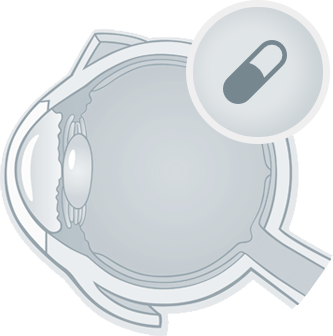DIABETIC RETINOPATHY
Diabetic retinopathy is an ocular and vascular complication of diabetes, which is caused by the deterioration of the blood vessels that supply the retina. It can affect any patient with both type 1 and type 2 diabetes. The more years of growth, the greater the chance of developing retinopathy. Diabetic disease is asymptomatic at first, hence the importance of regular eye examinations.
Sometimes the patient does not arrive with symptoms, but when the revision is performed, s/he already has an ocular fundus in which the ophthalmologist sees that the cholesterol has left the blood vessels and is beginning to drench the retina.
That is the first step of retinopathy. The blood vessels begin to fail and release serum, which causes a thickening of the retina, which affects vision progressively. First at the centre, but it can continue to evolve into complete blindness.

DIAGNOSIS AND TREATMENT
The diagnosis of the disease is done with a revision of the ocular fundus. All patients who suffer from this disease perform at least one annual check of the disease, because it is a disease whose treatment depends on 90% of the patient´s effort.
To do this, there are six key factors that determine the evolution of the disease. A strict monitoring of sugar, cholesterol and lipids, as well as blood pressure, must be maintained. In addition, it is mandatory to exercise regularly and not smoke. In the case of snorers, it is also important to perform a night-time apnoea check, and if there is anaemia, to correct it. Diabetics must monitor their weight closely to avoid obesity.
Surgery is used when the more advanced stages of the disease are reached and monitoring measures are not enough. It is possible to restore vision to blind patients in many cases with an operation. It may not be possible to recover the whole of their pre-disease sight, but it is possible to fix many times the loss that has been produced by sugar.
Fortunately, there is a growing awareness of the disease and the cases in which it is necessary to intervene are being reduced.
Important:
- More than 90% of the treatment of diabetic retinopathy depends on the patients themselves.
- No smoking and exercise are two key factors in disease control


